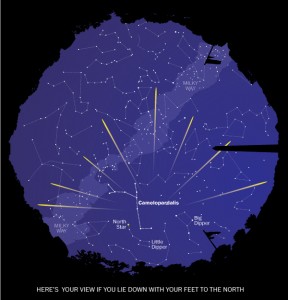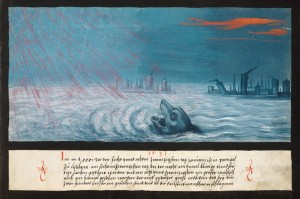Thanks to the readers of Maitland, Florida and the Maitland Public Library for choosing THE NIGHT OF THE COMET as their Contemporary Authors read for May.
Month: May 2014
Comet on Summer Reading List in New Orleans!
THE NIGHT OF THE COMET is on the required summer reading list for tenth, eleventh, and twelfth graders at Brother Martin High School, an all-boys Catholic school here in New Orleans. Didn’t I always say that Brother Martin was an excellent and discerning school? Go Crusaders!
Brother Martin is run by the Brothers of the Sacred Heart, the same religious gents who educated me in Baton Rouge.
A little history of the Brothers of the Sacred Heart, in case you’re curious:
The order was founded in 1821 in Lyon, France by the Reverend Andre Coindre. His aim was to help boys orphaned during the Reign of Terror. In 1847, at the request of the Bishop of New Orleans, the Brothers sent five missionaries to the US, where they founded their first American school in Mobile, Alabama. The New Orleans school for boys was established in 1869, and the Baton Rouge school in 1894.
Today, there are about 1,200 Brothers of the Sacred Heart serving in 32 countries.
Here’s a picture of the Reverend Andre Coindre, founder:
New Meteor Shower Debuts Tonight: Camelopardalids!
Here’s some exciting news, at least for star buffs.
Tonight we’ll see the very first meteor shower from 2004’s Comet Linear (Comet209P). The shooting stars will appear to emanate from the constellation Camelopardalis, the giraffe, and thus the name of the shower, Camelopardalids.
Astronomers are predicting that not only will there be an awfully lot of stars falling tonight, but that they’ll also fall very slowly. From the Washington Post:
“For this brand new, never-before-seen shower, astronomers are predicting from 30 to perhaps hundreds of meteors an hour at peak. Likely, these meteors will be a plodding 12 miles per second. In contrast, Perseid meteors (August) scoot along at 25 miles per second and the Leonid meteors (November) zip through our heavens at 45 miles per second. Slow meteors mean they will look like a bright star falling, says Chester.”
Activity is predicted to start at 10:30 pm tonight, Friday, May 23, and continue until dawn Saturday, with peak hours 2:00 to 4:00 a.m. EDT.
Below is the full text from today’s Washington Post with more info on the shower. Happy star gazing!
New Meteor Shower May Burst into Meteor Storm Friday Night
By Blaine Friedlander Updated: May 22 at 1:31 pm
It’s something old creating something new: On late Friday night into Saturday morning, North America will likely see a brand new meteor shower called the Camelopardalids – with a compelling chance that these gentle shooting stars could become a torrential meteor storm and provide quite a light show.
These new meteors are dusty remnants of Comet209P/LINEAR, discovered in 2004.
“The general consensus is that this week’s Camelopardalids will be comparable to a very good Perseid meteor shower with an added possibility of a storm,” says Geoff Chester, astronomer at the U.S. Naval Observatory. “I’m planning to be out watching.”
With clear skies, sky gazers may see meteor activity late Friday night – at about 10:30 p.m. – according to Bill Cooke of the Meteoroid Environment Office at NASA’s Marshall Space Flight Center, Huntsville, Ala. Astronomers predict the peak will occur from 2 to 4 a.m., Eastern Daylight Time, on Saturday morning, but Cooke believes gazers can catch shooting stars all the way through dawn, when the sunrise washes them out.
The best way to spot shooting stars: Just look up, says Chester. It’s that simple. The meteors can be seen in all parts of the sky. The shower’s radiant looms in the northern sky – close to Polaris, the North Star. Specifically, the meteor will appear to emanate from the constellation Camelopardalis, the giraffe. (Link: Merriam-Webster pronunciation of the constellation Camelopardalis.) Chester suggests finding coffee, patience and looking toward the dome of the heavens.
For this brand new, never-before-seen shower, astronomers are predicting from 30 to perhaps hundreds of meteors an hour at peak. Likely, these meteors will be a plodding 12 miles per second. In contrast, Perseid meteors (August) scoot along at 25 miles per second and the Leonid meteors (November) zip through our heavens at 45 miles per second. Slow meteors mean they will look like a bright star falling, says Chester.
Meteors occur when the Earth strikes the leftover dusty trail from comets flown-by long ago. These trails contain sand-size particles and when Earth’s atmosphere meets these flecks, they light up and vaporize – creating beautiful streaks.
For the Camelopardalids, it’s parent Comet 209P/LINEAR was discovered in 2004 by the Lincoln Near Earth Asteroid Research telescope – hence LINEAR – run by MIT’s Lincoln Laboratory. The telescope is located in Socorro, New Mexico and funded by the United States Air Force and NASA. It’s serious mission – to find asteroids that threaten to hit the Earth.
Cooke explained that astronomers calculated Comet 209P/LINEAR’s orbit and found that it returns about every five years in an orbit between the sun and Jupiter. Astronomers have traced it back to 1703. “We don’t know what the meteor shower’s intensity will be,” he says. “If Comet 209P/LINEAR was a poor producer of debris, we’ll see nothing. But if the comet was more active 200 or 300 years ago, we’ll see a decent show. What happens this Saturday morning was determined a few hundred years ago.”
On Comet 209P/LINEAR’s current orbit, the comet passed the sun (perihelion) on May 6 and it will pass within about 5 million miles of Earth on May 29 – at a substantially dim 11th magnitude, beyond the visible range of the human eye. It will be a telescopic object.
Why hasn’t the Earth run into these meteors before? Cooke explains that thanks to the planet Jupiter’s gravitational pull, the comet’s debris trail is intersecting the Earth’s orbit for the first time.
Cooke says there are new meteor showers found fairly often, but with falling star rates so low “that even an experienced observer would not notice them. New showers with rates of tens or hundreds per hour are very rare,” he says.
The Night of the Comet is a Faulkner House Staff Pick for May!
Thanks to Faulkner House Books of New Orleans for choosing The Night of the Comet as their staff pick for May.
If you haven’t visited Faulkner House Books yet, you should. Travel and Leisure Magazine lists it as one of the best bookstores in America.
I’d up that, and call it one of the best bookstores in the world.
Staff pick for May, NIGHT OF THE COMET/George Bishop @GeorgeBishopJr #books #StaffPicks
— Faulkner House Books (@Faulknerhouse) May 2, 2014
The Book of Miracles
I’ve posted illustrations from the fantastic 16th century “The Book of Miracles” before. The manuscript is in the news lately because a new reproduction of it has just been published, with commentary, by Taschen Books. It got a write-up in the New York Review of Books a few days ago.
Briefly, The Book of Miracles was created in Augsburg (now in Germany) around 1550. The color illustrations depict “wondrous and often eerie celestial phenomena, constellations, conflagrations, and floods as well as other catastrophes and occurrences” (Taschen). Several comets appear in the book, which is why I happened to come across it. It reminds me of the old Ripley’s “Believe it or Not!” series, only it’s better.
Below are some images from the book that I’ve pulled from the Taschen website. Enjoy!














